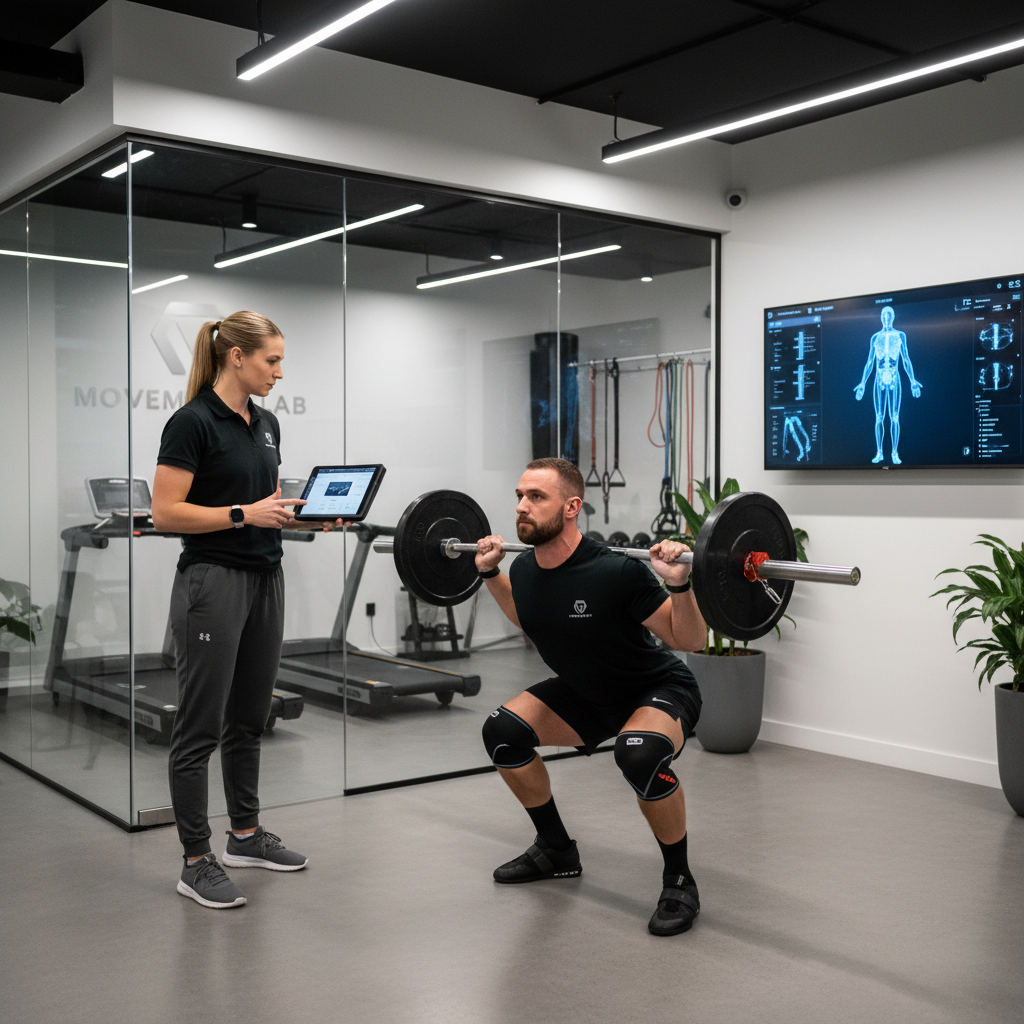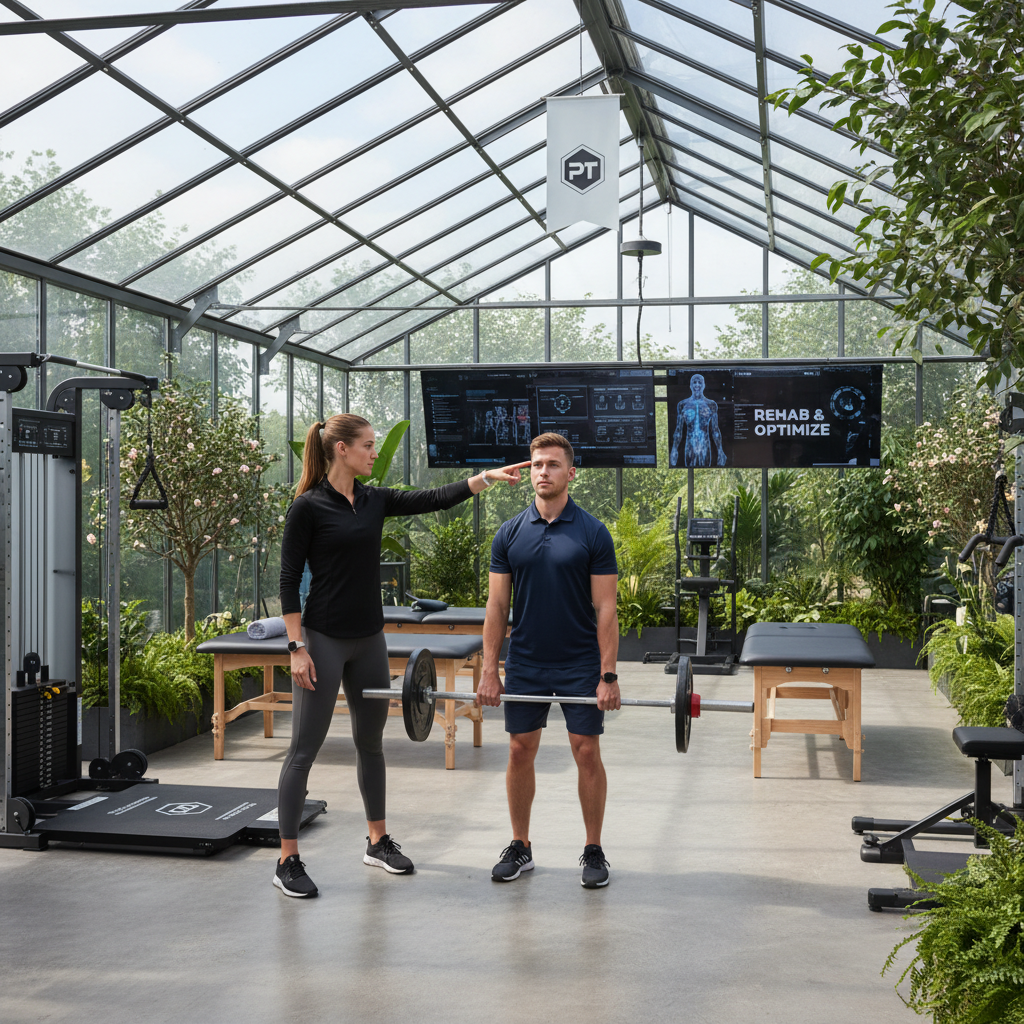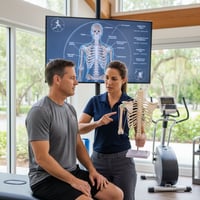Struggling to hit depth in your overhead squat? Do your snatches feel unstable, or does pressing a...
Understanding Low Back Pain in Olympic and Powerlifting
Low back pain can feel like a betrayal for dedicated lifters. You spend countless hours perfecting your form, building strength, and chasing new personal records in the squat, deadlift, or clean and jerk. Yet, a persistent ache or sudden twinge in your lower back can bring all that progress to a grinding halt.
For serious athletes, this isn't just an inconvenience - it's a barrier to your passion. Many lifters accept this pain as a necessary part of the sport, but it doesn't have to be. The truth is, low back pain is often a symptom of underlying issues in your movement mechanics or core stability.
Pushing through pain might seem like the tough thing to do, but it's actually a short-term fix that can lead to long-term problems. Physical therapy can help you understand the root cause of your pain, so you can return to training with confidence and strength.
 Why Olympic and Powerlifters Experience Low Back Pain
Why Olympic and Powerlifters Experience Low Back Pain
While a single bad lift can cause acute injury, most lifting-related back pain develops from cumulative stress. This builds up over time due to factors that compromise your spine's ability to handle heavy loads.
The most common culprits include:
- Overuse and Under-Recovery: Consistently high training volume without adequate rest leads to muscular fatigue. When your primary moving muscles are tired, your body recruits smaller stabilizing muscles around the spine to do work they weren't designed for.
- Movement Compensations: Your body excels at finding the path of least resistance. If you have weak glutes or limited hip mobility, your lower back often compensates by rounding or arching to complete a lift.
- Poor Core Stability: A weak or uncoordinated core forces the lumbar spine and surrounding ligaments to absorb forces that should be managed by deeper abdominal and back muscles.
- Mobility Restrictions: Tightness in your hips, hamstrings, or upper back can dramatically alter your lifting mechanics, placing excessive stress on your lower back.
The Core and Pelvic Floor: Your Internal Support System
Many lifters rely on external weightlifting belts for support. While belts can be useful tools, they're no substitute for the powerful internal support system you already possess. Your true core is a muscular cylinder composed of the diaphragm at the top, deep abdominal muscles wrapping around the sides, multifidus muscles along your spine, and the pelvic floor at the bottom.
When these muscles work together, they create intra-abdominal pressure that stabilizes your spine from the inside out. The pelvic floor serves as the foundation of this system. If it's weak, uncoordinated, or overly tight, the entire core structure becomes compromised, leaving your lower back vulnerable under load.
This is why specialized pelvic floor physical therapy often proves to be a game-changer for lifters with persistent back pain, helping restore the stability your spine needs to handle heavy weights safely.
Common Technique Mistakes That Cause Back Pain
Even with a strong core, poor technique can derail your progress and cause pain. A qualified physical therapist can provide detailed analysis of your lifts, but here are common errors to watch for:
- Rounding the Lower Back: This often happens at the bottom of a deadlift or squat and places enormous shear stress on spinal discs. It's usually a sign of poor hip hinge mechanics or mobility limitations.
- Excessive Arching: Overextending your lower back at the top of a lift can compress spinal joints. This often accompanies rib cage flaring.
- Ineffective Bracing: Proper bracing involves creating 360-degree pressure around your midsection, not just sucking in your stomach or holding your breath without tension.
- Butt Wink: This occurs when your pelvis tucks under at the bottom of a squat, causing lumbar spine rounding. It's often linked to ankle mobility, hip anatomy, and core control issues.
 How Physical Therapy Addresses Lifting-Related Back Pain
How Physical Therapy Addresses Lifting-Related Back Pain
When you visit a Winter Garden physical therapy clinic, the focus extends beyond your pain site to understand the complete picture. The goal isn't just temporary relief - it's permanently fixing the problem and making you a more resilient athlete.
A comprehensive assessment includes:
- Detailed Discussion: Your training history, specific goals, and exactly when and how pain occurs
- Movement Analysis: Evaluation of your squat, hinge, and other fundamental patterns to identify technique faults and compensations contributing to your pain
- Hands-On Evaluation: Assessment of joint mobility, muscle strength, flexibility, and nerve health to pinpoint physical limitations forcing your body into painful positions
- Core and Pelvic Floor Assessment: Evaluation of how your entire core system functions under load to ensure foundational stability for heavy lifting
Treatment Strategies for Lifters
Effective physical therapy for powerlifters and Olympic lifters typically involves:
- Manual Therapy: Hands-on techniques to improve joint mobility and reduce muscle tension
- Corrective Exercise: Targeted strengthening and mobility work to address specific deficits
- Movement Retraining: Learning proper lifting mechanics and motor patterns
- Load Management: Guidance on training modifications during recovery
- Pelvic Floor Training: Specialized exercises to optimize your internal stability system
Return to Pain-Free Lifting
Low back pain doesn't have to be your reality. It's not a badge of honor for hard training - it's a sign that something in your system needs attention. By focusing on proper mechanics, building true core and pelvic floor stability, and addressing your unique movement patterns, you can move past pain and unlock new performance levels.
Don't let back pain dictate your training or hold you back from your goals. If you're ready to build a stronger, more resilient body and return to lifting without limitations, professional help is available. Take the first step toward pain-free performance by addressing the root causes of your discomfort with expert guidance.

